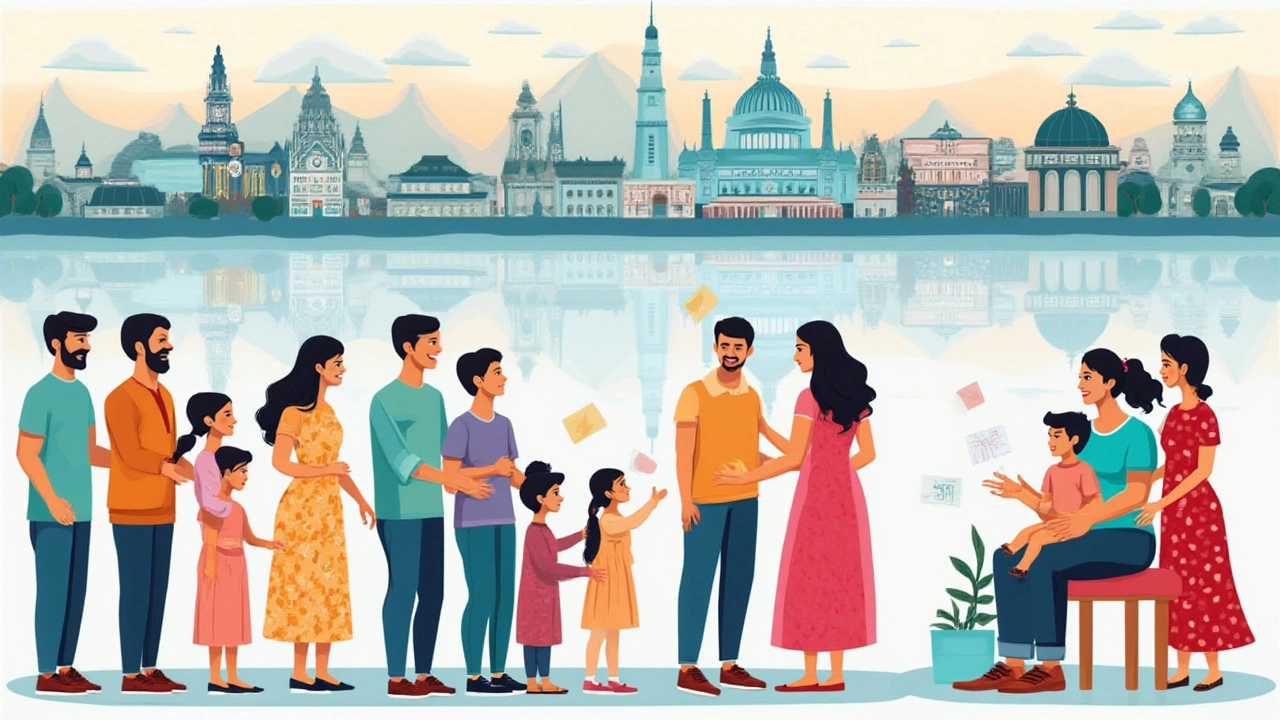-
15

Which State Offers the Cheapest IVF? Your Guide to Affordable Fertility Treatment in India
It’s shocking how wildly IVF prices swing across India. One couple spends a small fortune in Delhi. Another pays half that in a city you’d never guess. Infertility isn’t rare here—latest data says at least 10-15% of Indian couples face it. Yet, the price tags for IVF throw up even more hurdles. If you’re hunting for the cheapest IVF in India, reading headline figures won’t cut it. Sometimes, you need to dig past the popular metros and look into how states compete on affordability, clinic quality, and real results.
The Anatomy of IVF Costs: Why Do Prices Vary So Much?
If you ever sat down with two friends who tried IVF, you’d know sticker shock is real. IVF—short for In Vitro Fertilization—can cost as little as ₹70,000 for a basic cycle in some places, but shoot past ₹2 lakh in others. Ever wondered why?
First, the obvious. Big cities like Delhi, Mumbai, and Bangalore come with higher clinic overheads. Land, staffing, equipment—they all pile on. Second, clinic branding. Fancy names, shiny waiting rooms, veteran doctors? That marketing budget finds its way into your bill. But, is a swanky lounge really worth it if they charge triple for the same process?
Prize catches often hide outside the metros. States like Rajasthan, Odisha, West Bengal, and Tamil Nadu have clinics offering IVF at lower costs. They save on property, lower staff salaries compared to Mumbai or Bangalore, and skip the luxury trimmings. Good for them, good for you.
Also, public hospitals sometimes partner with government health schemes or NGOs, helping to drive the price even lower—if you fit their eligibility rules. Meanwhile, private corporate clinics often stick with premium price points to target wealthier clients or medical tourists.
Here’s a breakdown of what goes into an IVF bill, no matter where you go:
- Ovarian stimulation drugs (largest cost chunk, imported meds are pricier)
- Ultrasounds, blood tests, and hormone monitoring
- Egg retrieval procedure and anesthesia
- Lab work (fertilization, embryo culture, ICSI if needed)
- Embryo transfer
- Post-procedure medications and doctor visits
This explains part of the puzzle, but there’s more. Survival of embryos in the lab (that ‘success rate’ clinics flash in ads), extra charges for advanced procedures, and any add-ons like freezing embryos or genetic screening will really inflate that base cost. Always ask clinics what exactly goes in their package—don’t fall for the lowest number alone.
| State | Average IVF Cost (INR, Basic Cycle) | No. of Accredited IVF Clinics |
|---|---|---|
| Delhi | 1,50,000 - 2,80,000 | 120+ |
| Rajasthan (Jaipur focus) | 70,000 - 1,30,000 | 40+ |
| Odisha (Bhubaneswar) | 75,000 - 1,40,000 | 15+ |
| West Bengal (Kolkata) | 1,10,000 - 1,70,000 | 30+ |
| Chennai, Tamil Nadu | 1,00,000 - 1,70,000 | 50+ |
| Mumbai, Maharashtra | 1,80,000 - 2,50,000 | 100+ |
| Kerala | 1,10,000 - 1,90,000 | 25+ |
Yes, Rajasthan and Odisha leap out as the cheapest options. But don’t pack your bags just yet—affordability means nothing if clinics have poor success rates or lack proper accreditation.
Which States Top the List for Cheap IVF—and Why?
The money-saving legends when it comes to IVF in India are Rajasthan (especially Jaipur) and Odisha (mainly Bhubaneswar). Clinics here consistently undercut big metros by ₹30,000–₹80,000 per cycle. How are they doing it?
First, lower real estate, labor, and local tax costs mean clinics can offer the same treatments for a fraction of metro prices. Jaipur, in particular, has grown into a major fertility destination over the last five years, building a reputation for both quality and lower costs. You get board-certified embryologists—some even trained at big-city institutes—but pay much less than in Mumbai or Delhi.
Odisha is a dark horse. Fewer clinics, but some are linked to local universities or medical colleges. These institutions occasionally offer subsidized cycles, especially for residents or referred patients. Word of warning, though: waiting lists can be longer and facilities may not always feel as “polished” as those in Chennai or Mumbai.
If you take West Bengal (mostly Kolkata), the prices are still better than most big metros. Kolkata has a mix: established IVF chains with standardized protocols, and a cluster of smaller clinics that compete fiercely on price. West Bengal’s clinics also attract patients from neighboring states and even from Bangladesh, driving up competition and keeping rates down.
Tamil Nadu’s big cities, like Chennai, can come close to Kolkata’s figures if you shop around. Dr. Kamala Selvaraj’s pioneering work in the region made IVF popular there, inspiring a dozen new clinics to spring up. Today, the patient volume in Chennai makes clinics fight hard for your attention—and that pushes some prices down without really hurting quality.
But why shouldn’t you just go to the cheapest state outright? Here’s the twist: traveling to a new state adds lodging, food, and time-off-work costs. Some folks save ₹30,000 on treatment but rack up ₹50,000 in travel and stay expenses during a three-week IVF cycle. It pays to do the math first and look for package deals—some clinics in Rajasthan and Tamil Nadu team up with hotels or guesthouses to offer bundled accommodation at a better price.
So, why don’t the other states match these rates? Maharashtra (Mumbai especially) and Delhi charge more partly due to sheer demand, status, and the cost of “big name” clinics. Some patients report the higher rates pay for shorter wait times or marginally better comfort, but not always higher success rates.
The cheapest state isn’t always the one with the lowest headline price—it’s the one that balances price, success rates, and low travel hassle for cheapest IVF treatments, especially if you’re not local.

What Should You Watch Out for When Choosing a State?
Spotting a low IVF price online is easy. Ensuring you get actual value for your money, though? That’s where most people trip. So before you chase bargain deals, here’s what you need to look out for:
- Clinic accreditation: LegitIMATE fertility centers should be certified by ICMR (Indian Council of Medical Research). Run from any clinic that can’t show you certification or trips over basic success rate questions.
- Success rates transparency: Skip glitzy websites. Ask the doctor for raw success numbers for people your age group and problem. A published average of 40-50% for women under 35 is decent by Indian standards.
- Doctor involvement: You want the actual fertility specialist—not just nurses—managing your protocol and answering your questions. In some cheaper clinics, doctors might be available only at crucial steps, which can hurt continuity of care.
- All-inclusive pricing: Ask for “final” bills, not just the baseline. Many clinics quote ₹80,000 but add 40K later for medicines, lab fees, or procedures like ICSI (if male factor issues exist).
- Equipment and technology: Do they use modern incubators, micromanipulators, or import basic meds? Updated tech, even in a modest setting, raises the odds of a good outcome.
- Travel and stay: Traveling from outside? Some clinics offer discounted stay-and-IVF packages. Ask about travel support, especially if you stay for multiple cycles.
Pull up recent patient reviews—especially from medical forums, dedicated fertility WhatsApp groups, or state-wise Facebook support circles. These can clue you in to clinics that look great on paper but disappoint in real life.
Have a rough idea how many cycles you might need. National stats show the first attempt works for about 33% of women under 35, but two cycles is closer to reality for folks over 35 or with more complex fertility issues. Budget accordingly.
And don’t forget about hidden charges: embryo freezing, storage, genetic testing, medications during pregnancy support—all these can blow your budget if you’re not careful.
Tried-and-Tested Tips to Save on IVF Without Cutting Corners
The most successful IVF journeys I’ve heard about always start with solid research. Here are tactics real couples have used to get the best bang for their IVF buck, without getting “discounted” on care:
- Target “mid-tier” clinics in cost-effective states like Rajasthan and Odisha. Research beyond the top Google results—sometimes the best value isn’t the first homepage you see.
- Get full quotes in writing, specifying what’s included. Then check for any likely extras.
- Check if public hospitals with IVF setups (like SMS Medical College in Jaipur) have open enrollment—some do subsidized cycles for select residents.
- Ask clinics for discounts if you’re doing multiple cycles or if you pay upfront. Some offer 10% off for doing two cycles in advance.
- If you need advanced options (like donor eggs or ICSI), calculate total package costs—sometimes a more expensive clinic ends up cheaper once all fees are itemized.
- Look for state-specific health schemes or women’s support NGOs. For example, a few Rajasthan clinics have tie-ups with government schemes that knock something off the final price.
- Join IVF support groups for state recommendations—local patients love to share good (and bad) experiences.
- Compare medicine prices at local pharmacies versus what the clinic charges. Some let you source meds yourself, saving thousands.
- Factor in travel, accommodation, and how many days of work you’ll need off—sometimes staying local is unexpectedly cheaper.
No, you don’t need to cut corners on safety or expertise when chasing affordable IVF. The key is verifying credentials, talking to previous patients, and shopping like you would for any major investment. It’s stressful, but you’ll feel empowered once you see the difference it makes to your budget and confidence.

Looking Ahead: Is Cheapest IVF Always Best—and What Else Should You Ask?
The dream: get high-quality treatment at a modest price tag. But don’t let “cheapest IVF” blind you. Here’s what savvy couples always ask before they sign up:
- What are your doctor’s credentials and clinic track record—especially for the specific cause of infertility we have?
- Exactly which services are covered and which come extra? (Make them spell it out—don’t settle for “all-inclusive”.)
- What’s the typical protocol for my age and condition, and what are my odds, not generic averages?
- How easy will follow-ups be—do I have to keep returning for each phase? Some states offer remote support after the first visit.
One smart trick: arrange an online consultation first, before dropping everything and traveling to another state. Almost all major clinics will do this now, and you’ll get a feel for the doctor’s approach before you sink money into tickets and accommodation. You can also gather medical records, diagnosis reports, and have them reviewed virtually to see if they suggest any add-ons or extra cycles, making your budget planning easier.
So, where’s the sweet spot for affordable, quality IVF in India? For bargain hunters, Rajasthan’s top Jaipur clinics and Odisha’s Bhubaneswar centers win on pure price. Kolkata and Chennai aren’t far behind, especially if you track down second-tier but well-rated providers. If you’re from the North East, Kolkata is easier logistically and still affordable. South India patients might prefer Chennai or even some “fertility tourism” hubs in Kerala, especially for the cost of aftercare.
IVF is mentally and financially draining, but if you hunt smart, ask the right questions, and don’t just chase cheapness for its own sake, you stand a far better shot at making your dream family—without ending up broke or burned out.